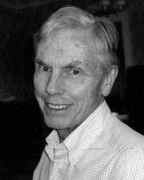Person: Tate, John Torrence

John Torrence Tate was an American mathematician who won both the Wolf and Abel prizes for his work in Number Theory.
Mathematical Profile (Excerpt):
- It was pure coincidence that his thesis advisor had made major contributions to the topics that had most fascinated Tate when he was a schoolboy.
- Tate was appointed as a research assistant and instructor at Princeton in 1950.
- The Artin-Tate seminar on class field theory given at Princeton University in 1951-1952 covered cohomology theory of groups, the fundamentals of algebraic number theory, a preliminary discussion of class formations, local class field theory, global class field theory, and the abstract theory of class formations and Weil group.
- Parts of this was written up as the book Class field theory by Artin and Tate and published in 1968.
- During his three years (1950-53) as a research assistant at Princeton, Tate published papers such as: On the relation between extremal points of convex sets and homomorphisms of algebras (1951); (with Emil Artin) A note on finite ring extensions (1951); Genus change in inseparable extensions of function fields (1952); (with Serge Lang) On Chevalley's proof of Luroth's theorem (1952); and The higher dimensional cohomology groups of class field theory (1952).
- For this last mentioned paper, Tate received the Frank Nelson Cole Prize in Number Theory from the American Mathematical Society in 1956.
- The London Mathematical Society elected Tate to Honorary Membership in 1999.
- Tate's deep insights have had a crucial impact on the development of arithmetic algebraic geometry from the sixties onwards.
- Tate's work on classification of abelian varieties over finite fields is a core part of standard theory, underpinning almost all work on the L-functions of Shimura varieties as well as being the starting point for the study of motives over finite fields.
- The theory of elliptic curves owes an enormous amount to his contributions, both theoretical and computational; the theory of height functions (Neron-Tate and Mazur-Tate) and descent theory (including his construction of the notorious Shafarevich-Tate group) are of key importance in understanding the arithmetic of elliptic curves, and Tate's algorithm for determining the bad reduction of an elliptic curve plays an equally important role in computation.
- Tate received a Sloan Fellowship during 1959-61, and a Guggenheim Fellowship during 1965-66.
- It was Tate who reported on Mumford's work at the awarding ceremony at the International Congress of Mathematicians in Vancouver.
- Tate was honoured with election to the U.S. National Academy of Sciences in 1969 and to the Académie de Sciences in Paris in 1992.
- Tate has introduced path breaking techniques and concepts, that initiated many theories which are very much alive today.
- Tate has been an inspiration to all those working on number theory.
- Numerous notions bear his name: Tate cohomology of a finite group, Tate module of an abelian variety, Tate-Shafarevich group, Lubin-Tate groups, Neron-Tate heights, Tate motives, the Sato-Tate conjecture, Tate twist, Tate elliptic curve, and others.
- John Tate is a revered name in algebraic number theory.
- In the first semester of the academic year 1980-81 Tate gave a course of lectures on Stark's conjectures at Université de Paris-Sud (Orsay).
- This is not the only book by Tate based on a lecture course he had given previously.
- This book was based on a course Tate had given over 30 years earlier in 1961 at Haverford College.
- On 24 May 2000, Atiyah and Tate presented the Clay Mathematics Institute Millennium Prize Problems in Paris.
- John Tate is a prime architect of this development.
- John Tate's scientific accomplishments span six decades.
- A wealth of essential mathematical ideas and constructions were initiated by Tate and later named after him, such as the Tate module, Tate curve, Tate cycle, Hodge-Tate decompositions, Tate cohomology, Serre-Tate parameter, Lubin-Tate group, Tate trace, Shafarevich-Tate group, Néron-Tate height, to mention just a few.
- According to the Abel committee, "Many of the major lines of research in algebraic number theory and arithmetic geometry are only possible because of the incisive contributions and illuminating insights of John Tate.
- Tate was one of the younger members of the Bourbaki team and almost unique in that team in that he was not French.
Born 13 March 1925, Minneapolis, Minnesota, USA. Died 16 October 2019, Lexington, Massachussets, USA.
View full biography at MacTutor
Tags relevant for this person:
Prize Abel, Origin Usa, Prize Wolf
Thank you to the contributors under CC BY-SA 4.0! 

- Github:
-

- non-Github:
- @J-J-O'Connor
- @E-F-Robertson
References
Adapted from other CC BY-SA 4.0 Sources:
- O’Connor, John J; Robertson, Edmund F: MacTutor History of Mathematics Archive
